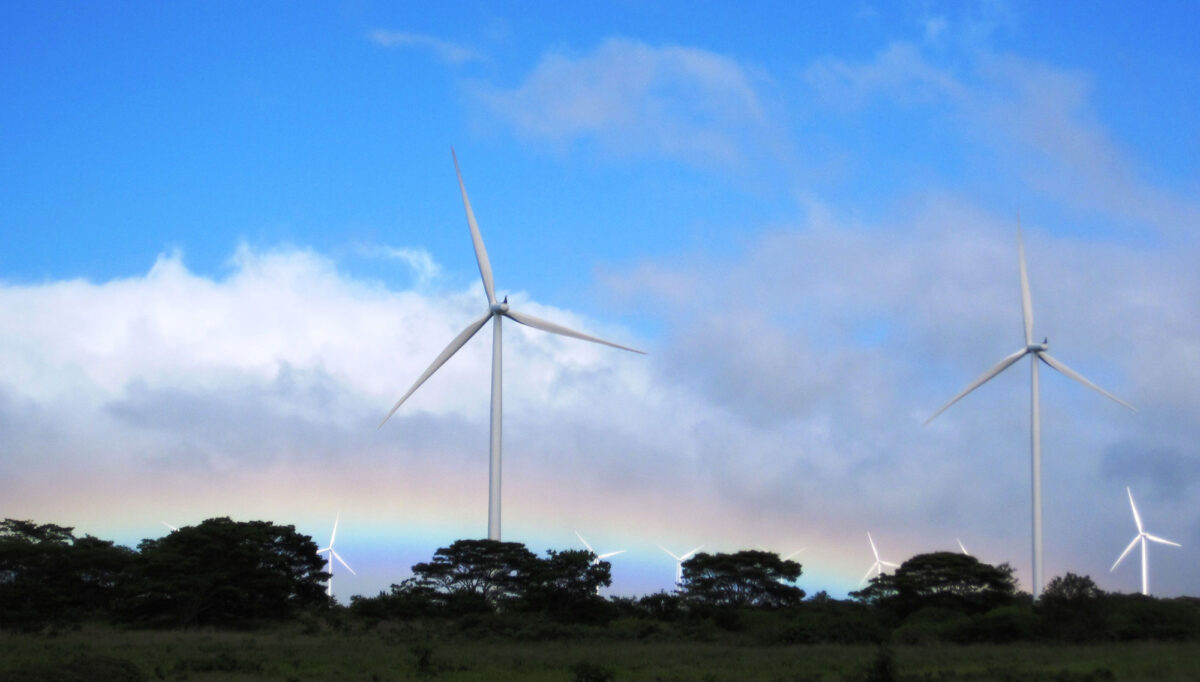Page snapshot: Introduction to energy of Hawai'i.
Topics covered on this page: Overview; Solar power; Geothermal energy; Hydroelectricity; Wind energy; Biofuels; Resources.
Credits: Most of the text of this page comes from "Energy in the western US" by Carlyn S. Buckler and Gary Lewis, chapter 7 in The Teacher-Friendly Guide to the Earth Science of the Western US, edited by Mark D. Lucas, Robert M. Ross, and Andrielle N. Swaby (published in 2014 by the Paleontological Research Institution; currently out of print). The book was adapted for the web by Elizabeth J. Hermsen and Jonathan R. Hendricks in 2022. Changes include formatting and revisions to the text and images. Credits for individual images are given in figure captions.
Updates: Page last updated June 3, 2022.
Image above: Wind turbines in Hawai'i (island not specified). Photo by Paul Cryan (USGS, public domain).
Overview
Hawai'i has no fossil fuel resources of its own, so that state is highly reliant on importing fossil fuels to meet its energy needs. Nevertheless, because of its mild tropical climate, Hawai'i had the second lowest per capita energy use in the U.S. in 2010. The majority of Hawai'i's energy demand in 2010 was for transportation, due in large part to heavy commercial and military aviation fuel use. That year, Hawai'i imported 94% of its energy and had the highest electricity prices in the nation. The Hawaiian government, however, is working on changing that reliance through the use of other energy initiatives.
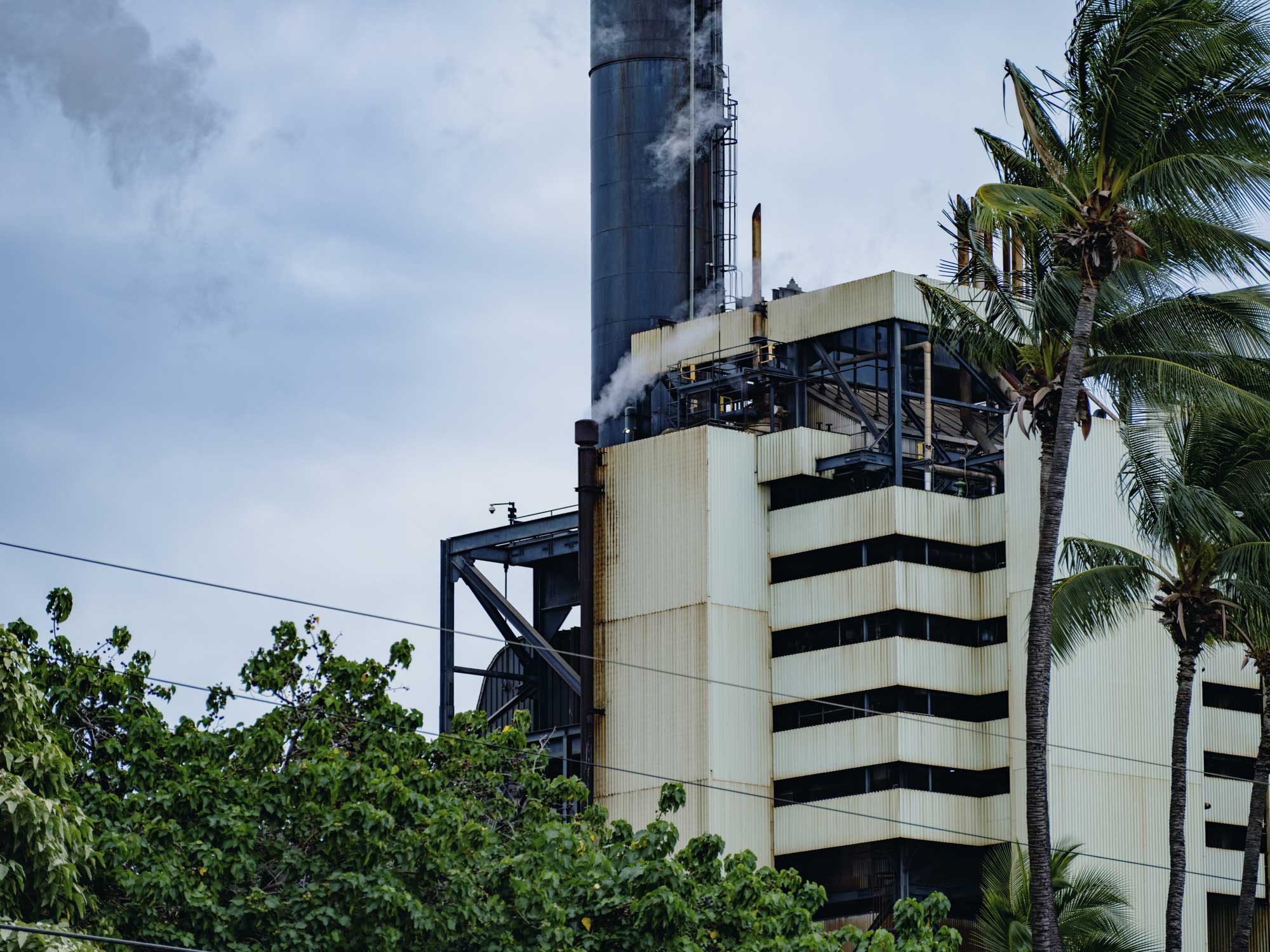
Kahe Power Plant, Kapolei, O'ahu, 2020. This plant burns oil to generate electricity. Photo by Tony Webster (flickr, Creative Commons Attribution 2.0 Generic license, image resized).

Marine Corps Air Station Kaneohe Bay, Marine Corps Base Hawaii, Molkapu Peninsula, O'ahu. Photo by Tony Webster (flickr, Creative Commons Attribution 2.0 Generic license, image resized).
Solar power
Solar photovoltaic (PV) capacity increased 150% in Hawai'i in 2011, moving the state up to 11th in terms of PV capacity. While solar power still provides only a few percentage points of overall electricity production in Hawai'i, new projects are being planned on almost all the major islands.

Holaniku solar plant, Keahole Point, Hawai'i. Photo by Xklaim (Wikimedia Commons, Creative Commons Attribution-ShareAlike 3.0 Unported license, image resized).
Geothermal energy
Hawai'i has just one geothermal power plant, which is located on Hawai'i Island and taps into the heat from Kīlauea volcano. The Puna Geothermal Venture plant generates around 265 gigawatt hours (GWh) of energy a year, which is around 23% of the electricity required on the island. In May 2018, the plant was threatened by nearby lava flows and was temporarily shut down; the lava flows eventually damaged portions of the plant. It began operating again in November 2020, slowly ramping up electricity generation. Areas around the rift zones of volcanoes on Maui are currently under study for geothermal power plants.
The potential exists to generate enough geothermal electricity to meet the Hawai'i's power needs. Doing so would require considerable investment in infrastructure, including laying cables between islands to connect the power grids. Even with these considerable outlays, however, the cost of production would still be lower than that of fossil fuels.

Structures from the Puna Geothermal Venture (center-right side of image) near a lava flow on Hawai'i Island in May 2018. Source: USGS (via Wikimedia, public domain).
Hydroelectricity
The first hydroelectricity was generated near Hilo on Hawai'i Island in the 1880s, but today there are only a few small hydropower plants used in the state. These plants mainly power sugar mills and other small industry. The largest hydroelectric plant is on Hawai'i Island on the Wailuku River in Hilo.
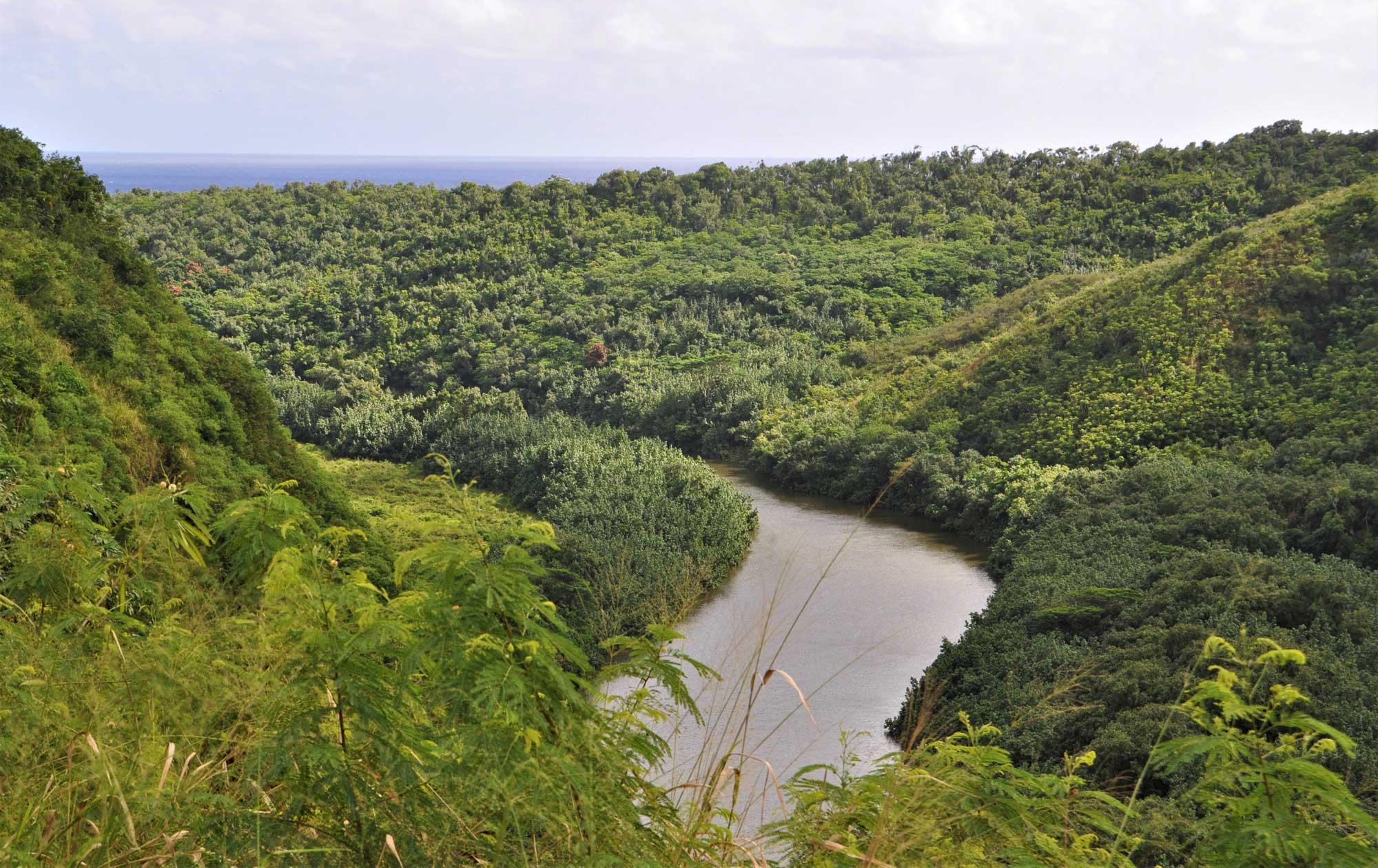
The Wainiha River on Kaua'i, 2013. One of Hawai'i's hydroelectric plants, built in 1905 to 1906, is located on this river. It was originally constructed to generate power to irrigate sugarcane, but currently supplies power to a coffee grower. Photo by Glenda and Ken (flickr, Creative Commons Attribution 2.0 Generic license, image resized).
Wind energy
Hawai'i has the potential to meet all its electricity needs using wind-generated power. A study in 2010 by the National Renewable Energy Laboratory (NREL) showed that onshore wind generation could produce 12 billion kWh a year, considerably more than the 10 billion KWh that was used in Hawai'i in 2011. Offshore wind generation potential is even higher.
There are currently eight operating wind farms in Hawai'i, which include arrays on O'ahu, Maui, and Hawai'i. The largest is Kawailoa Wind Farm on the northern shore of O'ahu, which has 30 windmills that generate a total of 69 MW per year.
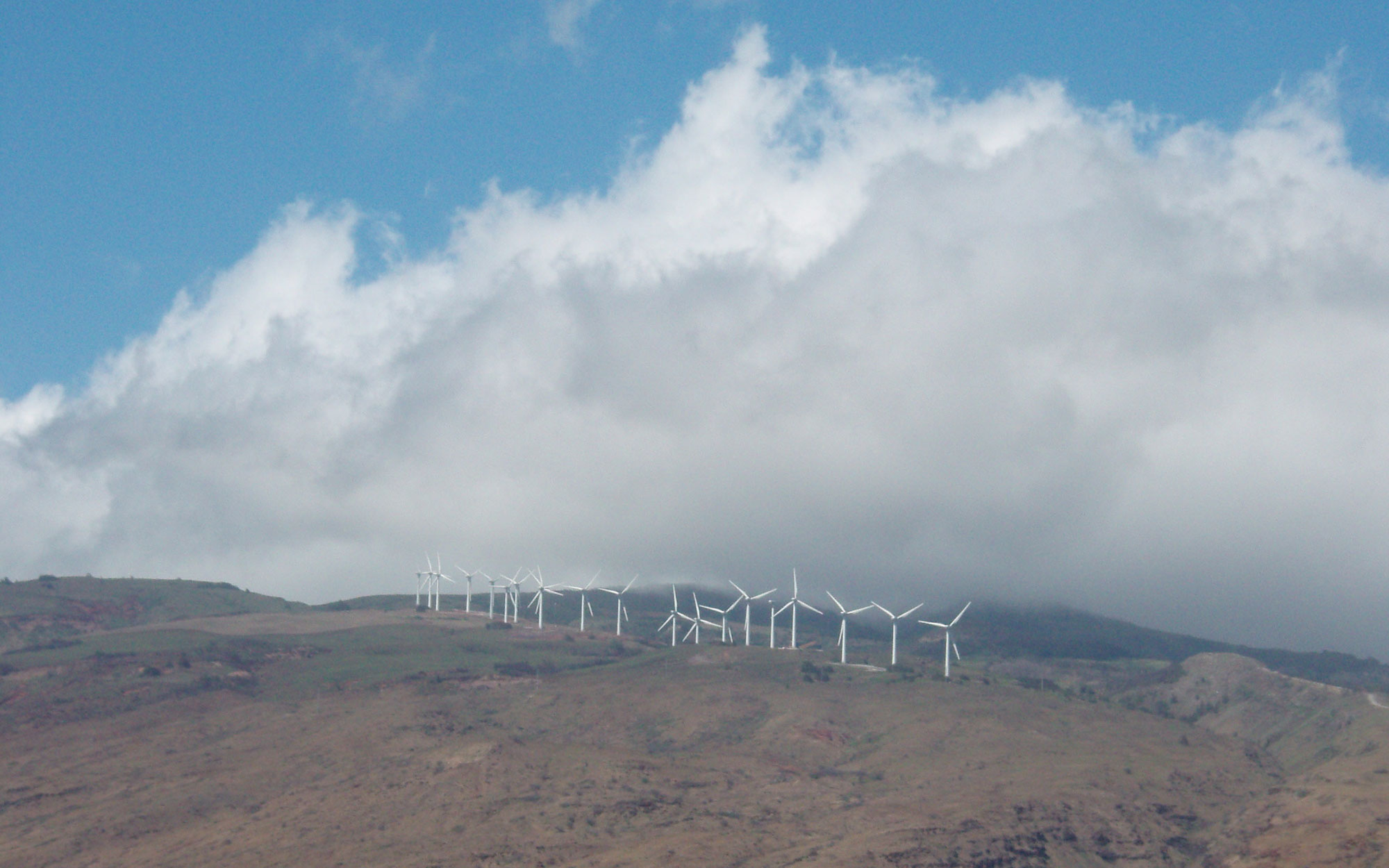
Kaheawa wind farm, Maui, 2010. Photo by Claire Fackler, CINMS, NOAA (NOAA Photo Library on flickr, Creative Commons Attribution 2.0 Generic license, image cropped and resized).
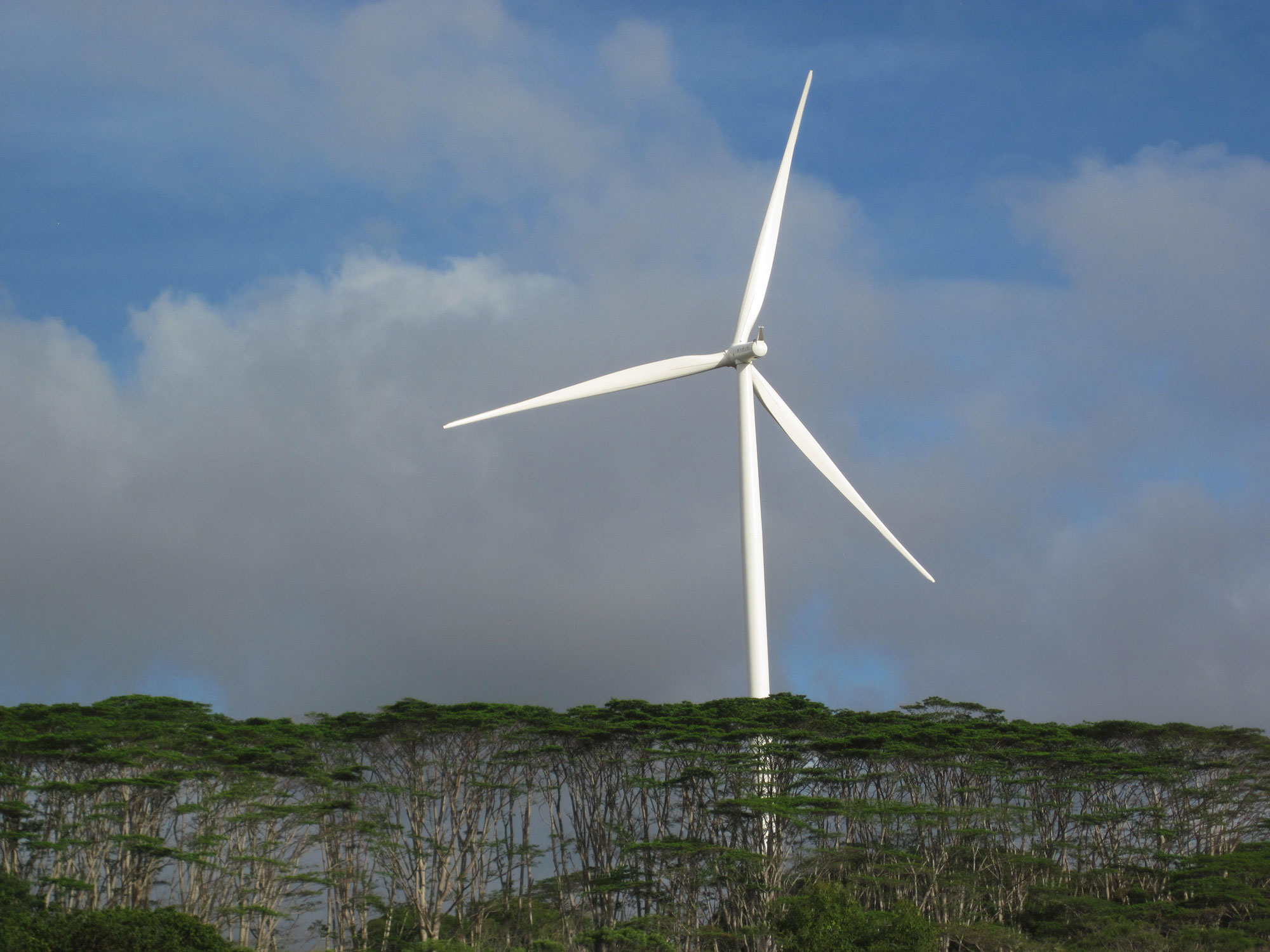
A wind turbine on O'ahu. Photo by Marcos Gorresen (USGS, public domain).
Biofuels
Hawai'i has the world’s largest commercial electricity generator that is fueled exclusively by biofuels. Since existing power plants use expensive, imported liquid fossil fuels, converting to biodiesel was cost-efficient by comparison. The biodiesel is produced using waste agricultural materials and waste oils from restaurants.
Resources
Resources from the Paleontological Research Institution & partners
Earth@Home: Introduction to Energy: https://earthathome.org/hoe/energy
Earth@Home: Introduction to Plate Tectonics: https://earthathome.org/hoe/plate-tectonics



